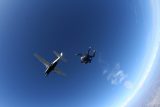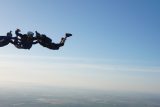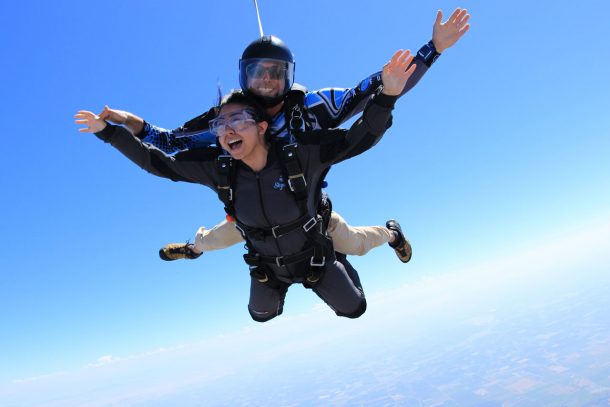Worried you’re going to get a “jiffy tummy” (in British parlance) or experience nausea after skydiving? You’re not alone. Worrying that you’re going to throw up on a skydive is one of the most common concerns we field every day. Luckily, it’s also one of the easiest to clear up. With a little foreknowledge and preparation, it’ll be the last thing on your mind (in a distant last place after “eek!,” “whee!” and “I DID IT!”). Here’s what you need to know.
1. It doesn’t happen that often.
It’s a pretty rare occurrence that a tandem student will get sick on a skydive. It’s so uncommon, in fact, that we get the feeling the concern is the internet’s fault, no? Most people who ask the question have probably happened across internet footage of an unfortunate tandem student losing his/her breakfast to the landscape below. Those videos get a lot of clicks (schadenfreude, much?), but y’know what? Statistically speaking, you are probably not going to get sick on a tandem skydive…especially not if you prep right.
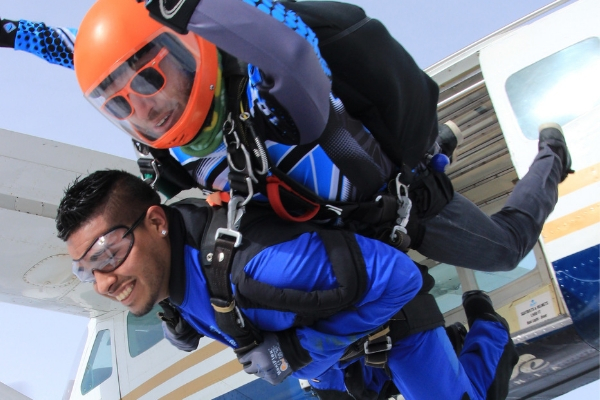
2. You’re gonna need to line the tummy–just not too much.
Eating sensibly is a good idea for life and skydiving alike. Before you jump, eat a moderately-sized, nutritious meal. If you don’t eat, your blood sugar will be low before and during your jump, which will be uncomfortable. (We stand against hangriness.) Chowing down is bad on the opposite count, as your blood flow will be leaving your brain behind at the distress call of your overburdened belly. If you’re too nervous to eat normally, drink your calories. Peanut-butter-chocolate-banana smoothie? PERFECT.
Pro tip: Bring healthy snacks to the dropzone, just in case there’s a wait.
3. Maybe you should do drugs.
NOT THAT KIND. We mean motion sickness medication, silly! If you already know you’ve got a history of experiencing motion sickness or random nausea, you probably already have this stuff in your bathroom cabinet, and you’d do well to make use of it here. Take the appropriate dose for you at the appropriate time before the jump, and you’ll have your “hurl insurance” sorted.
4. Hydration is key.
To keep your digestive system moving in the right direction when you make your jump, keep it properly hydrated. Dehydration is a sneaky day-ruiner that rears its ugly maw extra-meanly when it’s exposed to altitude–and it easily hides behind nervousness and excitement before it strikes. Dehydration is a sneaky reason for nausea after skydiving, so do yourself a favor and keep that monster at bay.
5. Breathe.
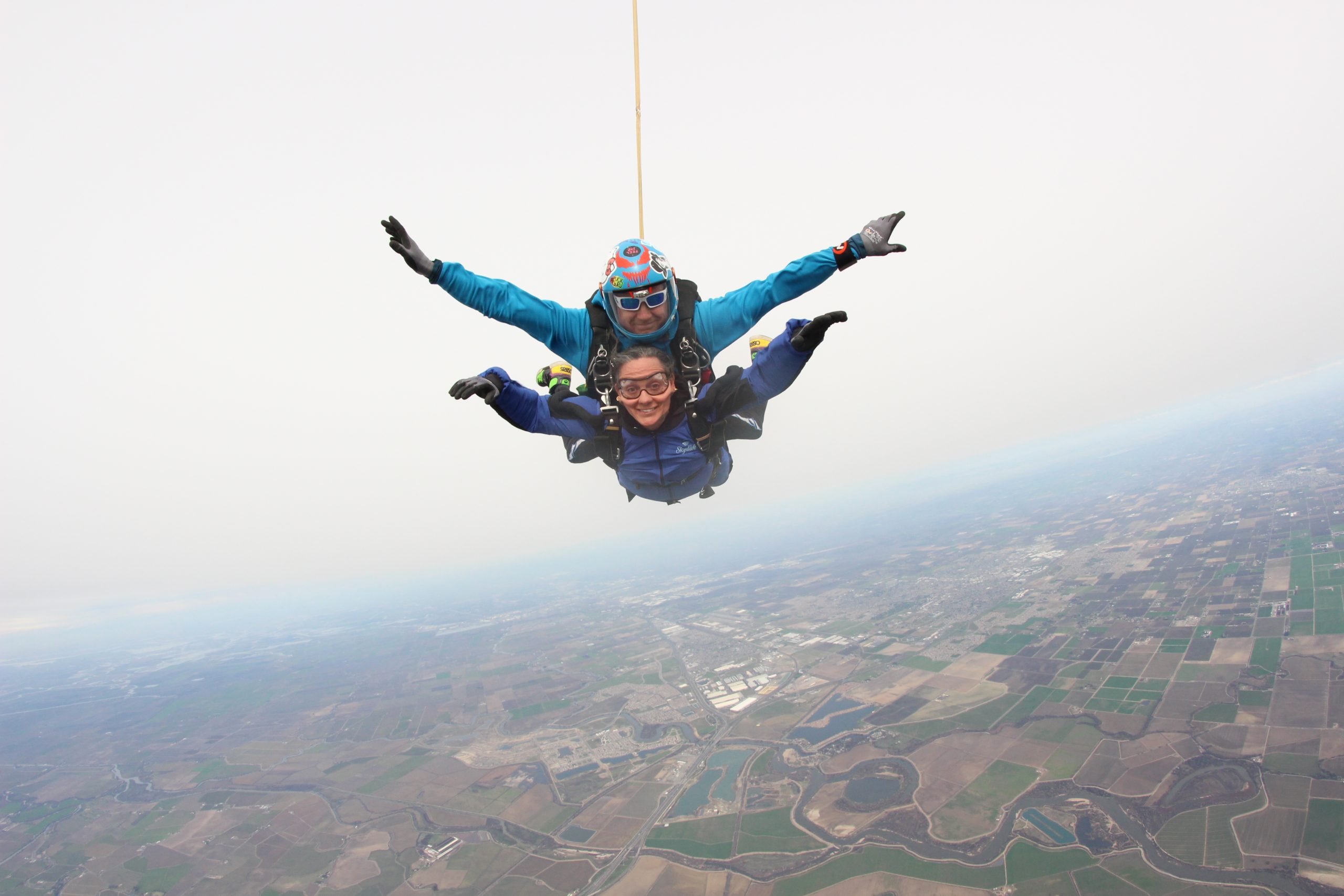
If your nausea is triggered by overstimulation, we have a simple, safe, natural and absolutely free solution: breathing. Let the wind remind you to invite air into your lungs in an even, regular pattern. A calm, breathing body isn’t a ralphing body. If you need inspiration, check out your instructor’s zen–we employ the best in the business, after all–and make the commitment to follow their lead and keep your breakfast where it belongs.
After a skydive with us, the only illness you’ll feel is homesickness for the sky.

